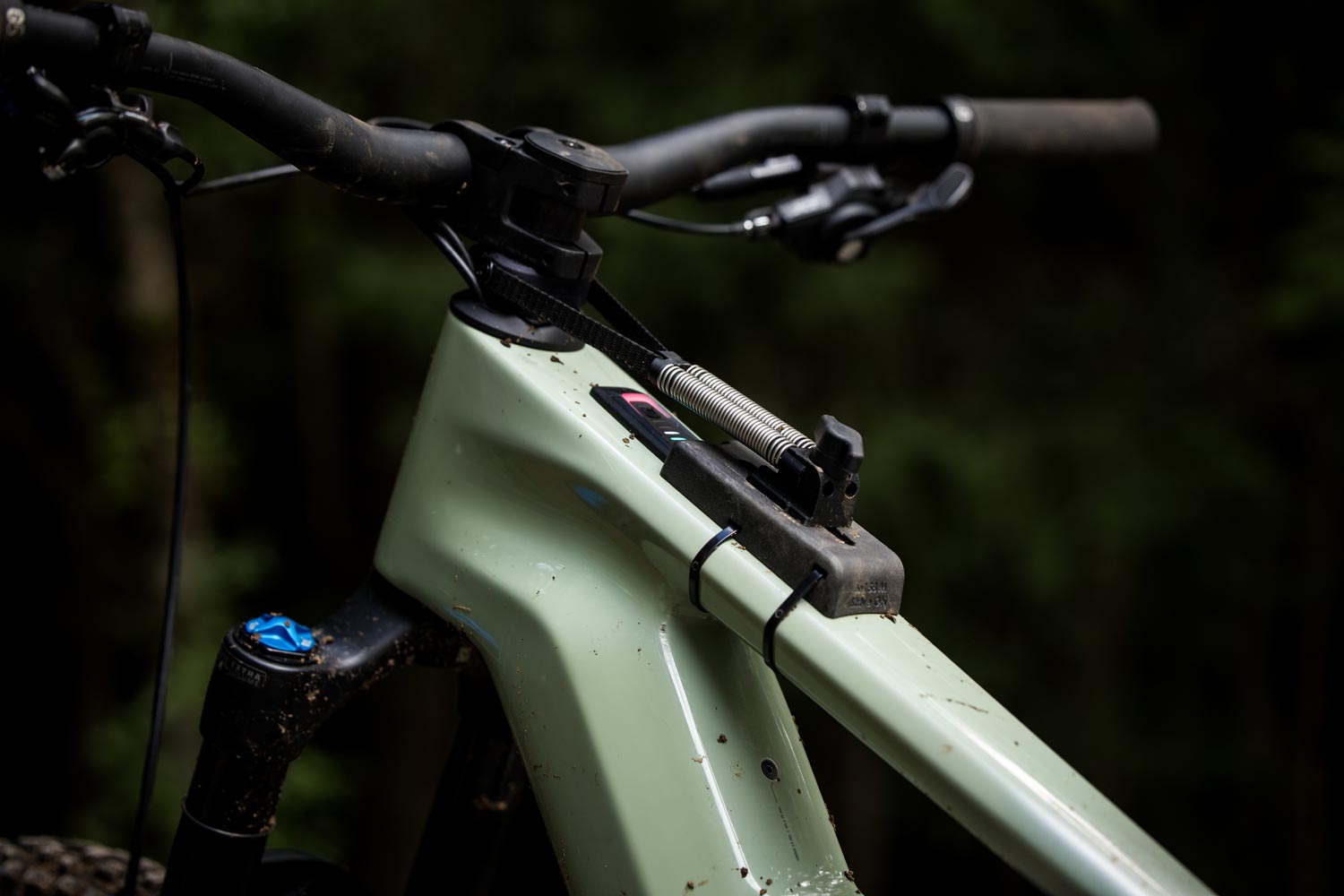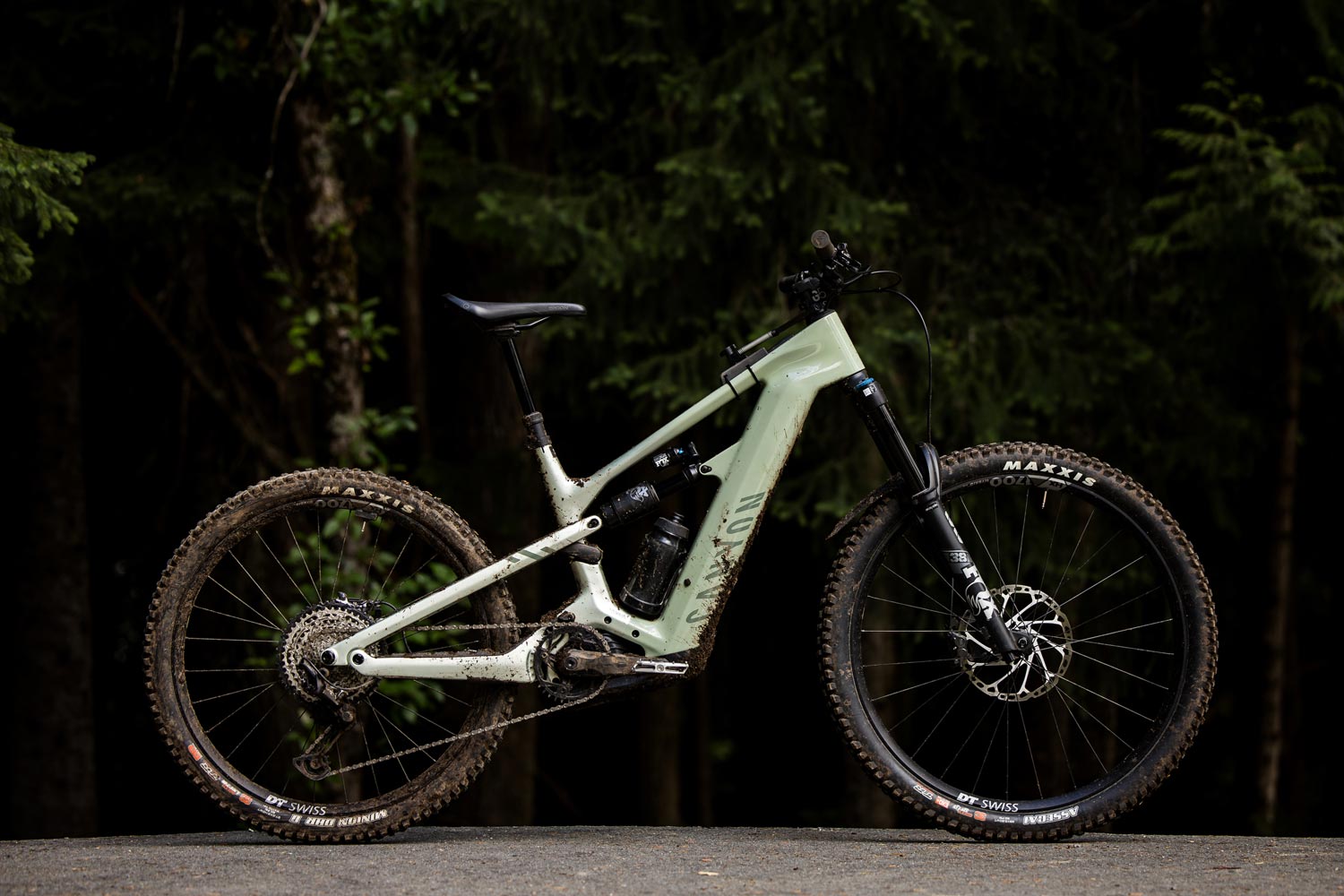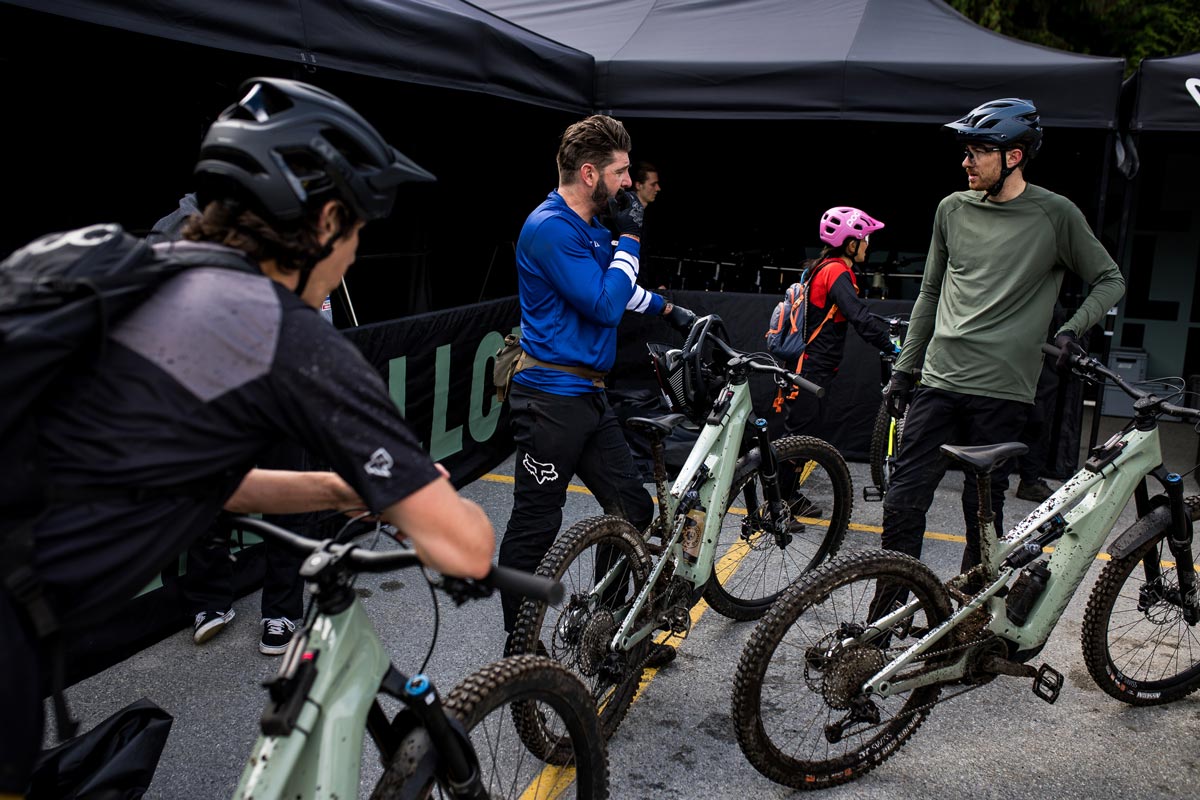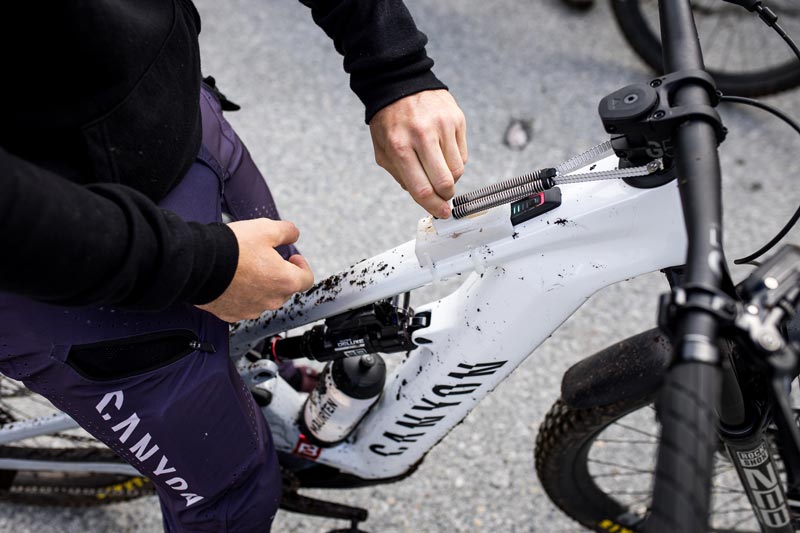FIRST RIDE
PROTOTYPE CANYON STRIVE:ON K.I.S.
MECHANICAL STEERING STABILIZER IMPRESSIONS
Words by Drew Rohde | Photos by Mad Dog Boris
While attending Crankworx Whistler 2023, we were invited to join Canyon Bicycles’ Gravity MTB Product Manager Jack Noy, and Canyon’s Enduro-race winning athlete Jesse Melamed, for a ride aboard a customized Canyon Strive:ON featuring their K.I.S. system. The bikes were sporting 3D-printed mounts which were zip-tied to the top tube and housed the two springs that help return the handlebars to straight after impacts on the trail. Ahead of the springs sit high stretch polymer cords that attach to a tuned cam, which offers the torque curve Canyon and Syntace deemed optimal for each bike’s discipline and riding style. The K.I.S. or Keep It Stable system has been out for a while now, and you may remember an article and video last year when our UK Tech Editor Robert Johnston traveled to a Canyon media camp for a few days of education and testing. Be sure to check the link if you’d like an in-depth look at how the system works.

After talking with Robert at length about his experience, I was intrigued, but not entirely sold on the K.I.S. system and how necessary or valuable it would be. With that skepticism in hand, I accepted the Crankworx media ride invite with a big smile. Robert spent most of his time riding the K.I.S. system on the Canyon Spectral, whereas I would be riding the system on their Strive:ON eBike. A very different platform that could possibly make the case for added steering assistance even easier to sell.
Essentially the K.I.S. system is designed to combat the inherent steering instability of a two-wheeled vehicle. We’ve all experienced that “wheel flop” when the front tire reaches the point of no return and just drops down the path of least resistance. It can make for some less-than-desirable outcomes without manual correction from your arms.

The K.I.S. system performs similar to other vehicles which have a centering force to them, think of turning your car left and then taking your hands off the wheel. As you accelerate out of the corner, the wheel straightens back up, getting you on track with less effort and more safety in mind. K.I.S. relies on spring tension and those two straps to create that centering force, helping to right the ship; reduce fatigue and the effects of little bobbles, so you can focus on bigger challenges down the trail.
To read more about the system in detail, check out this article and video: https://theloamwolf.com/2022/10/25/first-ride-and-release-k-i-s/
The Wolf’s First Impressions
Much like Robert, I found the system undeniably had merit, but it demanded a little adjustment period. As we climbed towards Whistler Black Comb’s famous Dark Crystal trail I felt the difference, as I needed to put a bit more consciousness into my turns while climbing. I told myself, “there’s no way this is going to make the bike feel better: I can feel the resistance going up on these slow corners and technical moves”. Within a few more minutes the feeling began to fade and climbing the bike didn’t require any more thought or effort than an unassisted bike. When I turned the K.I.S. system off, I found that my front end was considerably less calm – the bars twisted back and forth with my body weight pushing on the pedals and I wandered around the trail a bit easier.
Once we got to the top, I opted to keep my K.I.S. system turned on and see how it would help this desert rat handle the wet, greasy roots of a technical Whistler downhill. I can’t say I had any feedback until about the second rest point of the descent. It was getting progressively steeper and faster, and lots more off-camber and rooty bits were showing up. Yet, much to my surprise, I felt confident and dare I say, stable… We sat perched above the next steep rock roll with a nasty rock garden shiny with moisture and wet mud on top of the rock. “Go ahead and turn off the system guys, let’s try the next bit of trail with it off” said Canyon’s Jack Noy. It was at that moment, when I did not want to turn it off that I realized the K.I.S. system was actually working for me.

After I removed the tension in the system and rode for a few more minutes without the assistance of the K.I.S. system, I instantly noticed a twitchier front end. I felt like I was constantly battling over and under correcting by making tons of little turns, instead of more purposeful bigger moves and corners. If my front tire rolled 1 mile with K.I.S. turned on, I felt like it rolled 1.25 miles with it turned off, just because of how much more I was cutting back and forth across the trail. Alright ,that may be a bit of an exaggeration, but I’m trying to convey the difference I saw and felt in my front end with the system being on and off.
So, does it mean that I want to see K.I.S. on my next bike? I don’t know to be honest. I’m sure there are going to be some negatives as I’m just pessimistic by nature, but I am happy to say that when I came home from Whistler a Canyon Spectral CF8 with K.I.S. was sitting in a box waiting for me. It’s built up and we plan on hitting the bike park very soon for some more test time and a thorough review, so stay tuned for that.
Until then, what I can say for sure is Canyon’s K.I.S. system has piqued my interest more than before my first ride on the system, and I honestly believe it helped improve my ride quality, safety and experience on a fairly slippery and technical ride down a legendary Whistler mountain bike trail.
For more info, visit Canyon.com
LEAVE A COMMENT, WIN FREE SWAG!
Want to win some free schwag? Leave a comment and vote up the most thoughtful comments and each month we’ll pick a winner. The person with the smartest and most helpful replies will earn some sweet new gear. Join the Pack and get the latest news and read the latest reviews on the top mountain and electric mountain bikes.


